Rane ME 30B Handleiding
Rane
Mengpaneel
ME 30B
Bekijk gratis de handleiding van Rane ME 30B (5 pagina’s), behorend tot de categorie Mengpaneel. Deze gids werd als nuttig beoordeeld door 8 mensen en kreeg gemiddeld 4.4 sterren uit 4.5 reviews. Heb je een vraag over Rane ME 30B of wil je andere gebruikers van dit product iets vragen? Stel een vraag
Pagina 1/5

Manual-1
OPERATORS MANUAL ME 30B
microGRAPHIC EQUALIZER
QUICK START
If this is your first equalizer, please do yourself and your speakers a favor and read the complete manual. “An ounce of
prevention...,” and all that.
You may use either the 3-pin or ¼" TRS connector for Input or Output. Hook-up is intuitive. Just follow the
silkscreened instructions on the rear of the unit. Polarity convention is per IEC/ANSI/AES standards of pin 2 positive, pin 3
negative and pin 1 shield. The ME 30B does not invert the signal. Only connect one INPUT type per channel. The 3-pin
and ¼" TRS Inputs do not sum. You may, however, use both types of OUTPUTS simultanesously if desired.
Anyone familiar with other graphic equalizers finds the ME 30B just as familiar. Setting curves is as easy as it is on all
Rane graphics thanks to our innovative constant-Q circuitry. If you feel you want more information on setting up your
curves, please read on.
If you are familiar with equalizers, then hook-up, plug-in, turn-on and go!
ME 30B CONNECTION
When first connecting the ME 30B to other components,
leave the POWER switch off until the very last. This gives
you a chance to make mistakes and correct them without
damaging your fragile speakers, ears and nerves.
INPUTS
Both 3-pin and ¼" TRS Inputs are wired in parallel and
are actively balanced. Each works equally well. Choose
strictly from a required hardware point-of-view, there will be
no performance trade-offs. The wiring convention adheres to
American, British and International standards of pin 2 or tip
being hot, pin 3 or ring being return, and pin 1 or sleeve being
shield. Unbalanced operation involves using only pin 2 or tip
as signal, and pin 1 or sleeve as sheild or ground. It is not
necessary to short any inputs to ground—it doesn’t hurt, it’s
just not necessary. Use pin 1, or the shell, for shield ground.
OUTPUTS
The Outputs mimic the Inputs. Balanced output requires
using pin 2 or tip, and pin 3 or ring for the signal. It does not
require pin 1 or shield. The signal exists differentially
between the two balanced leads; ground is not involved. For
hum-free systems ground is used only for shielding.
EXPANDING
Expanding and/or daisychaining the Inputs and Outputs
normally uses the ¼" jacks. Three parallel Input connectors
allows driving a second signal processor or amplifier without
special cabling.
SIGNAL LEVELS
Signal levels from -10 dBV to +4 dBu are considered
normal and within range (at least 20 dB of headroom exists
above these levels). Do not directly connect microphones into
the ME 30B. These require a mic preamp.

Manual-2
FRONT PANEL DESCRIPTION
1. ON switch: As you have astutely surmised by now, this switch powers up the ME 30B.
2. Filter level slide controls: Each of these sliders controls the output level of each of the bandpass filters. Center position is
grounded for guaranteed flat response.
3. OVERLOAD indicator: This red LED lights up if any section of the ME 30B is within 3 dB of clipping. Occasional
blinking of this LED is acceptable, but if it remains on more than intermittently, turn down either the equalizer’s LEVEL
control or reduce the output level of the preceding component to avoid audible distortion.
4. LEVEL control: This controls the level of signal coming into the ME 30B. Turn this control down if the OverLoad LED
lights up steadily (meaning too strong an Input signal). Since actual unity gain depends on varying slider settings (which is
why we have not marked a unity gain position on the front panel), use the BYPASS switch to determine the exact unity gain
position of this LEVEL control by comparing EQ and BYPASS volumes.
5. BYPASS switch: When the red LED is lit, this indicates that the unit is in the BYPASS mode: signal is routed directly from
the Input to the Output without passing through any active circuitry (often referred to as “hard-wire bypass”). Use this
switch to compare equalized and unequalized material, or to bypass the EQ section in the event of power loss or unit failure.
6. Filter RANGE switch: The gain range of the filter sliders is switchable (as a group) from ±6 dB for high resolution, to
±12 dB for maximum boost/cut capability.

Manual-3
REAR PANEL DESCRIPTION
IMPORTANT NOTE
CHASSIS GROUNDING
If after hooking up your system it exhibits excessive
hum or buzzing, there is an incompatibility in the
grounding configuration between units somewhere. Your
mission, should you accept it, is to discover how your
particular system wants to be grounded. Here are some
things to try:
1. Try combinations of lifting grounds on units that
are supplied with ground lift switches or links.
2. If your equipment is in a rack, verify that all
chassis are tied to a good earth ground, either through the
line cord grounding pin or the rack screws to another
grounded chassis.
3. Units with outboard power supplies do NOT ground
the chassis through the line cord. Make sure that these
units are grounded either to another chassis which is earth
grounded, or directly to the grounding screw on an AC
outlet cover by means of a wire connected to a screw on
the chassis with a star washer to guarantee proper contact.
1. 3-pin INPUT jack: This accommodates balanced signals. Rane adheres to the international and U.S. standard for balanced
pin configurations: Pin 1 is chassis ground (neutral), pin 2 is hot (positive), and pin 3 is signal return (negative). Choose
between this and the ¼" TRS Input jack—use only one—they do not sum.
2. ¼" TRS INPUT jack: This is a TRS (tip-ring-sleeve) ¼" jack accommodating either balanced or unbalanced signals. For an
unbalanced signal use a mono ¼" plug (single conductor with shield). For a balanced signal use microphone cable (two
conductor with shield) with a TRS ¼" plug. Choose between this and the ¼" TRS Input jack—use only one—they do not
sum. Refer to the included RaneNote, “Sound System Interconnection” for unbalanced wiring.
3. 3-pin OUTPUT jack: This balanced output is wired per AES standards of pin 2 “hot”, as described above in (1).
4. ¼" TRS OUTPUT jack: This is a TRS (tip-ring-sleeve) ¼" balanced jack compatible with either balanced or unbalanced
systems. For balanced systems, use a microphone cable wired with pin 1 is chassis ground (neutral), pin 2 is hot (positive),
and pin 3 is signal return (negative). Refer to the RaneNote, “Sound System Interconnection” for unbalanced wiring.
Product specificaties
| Merk: | Rane |
| Categorie: | Mengpaneel |
| Model: | ME 30B |
Heb je hulp nodig?
Als je hulp nodig hebt met Rane ME 30B stel dan hieronder een vraag en andere gebruikers zullen je antwoorden
Handleiding Mengpaneel Rane

18 Juni 2025
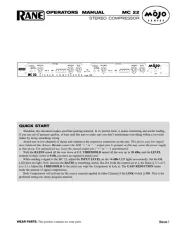
18 Juni 2025
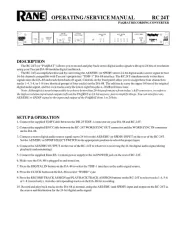
18 Juni 2025
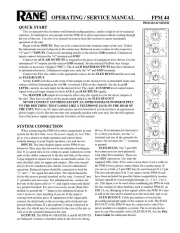
17 Juni 2025
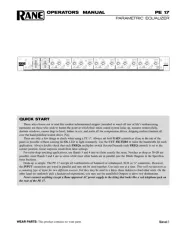
17 Juni 2025
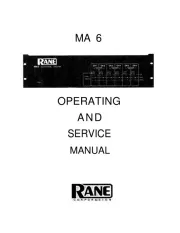
17 Juni 2025
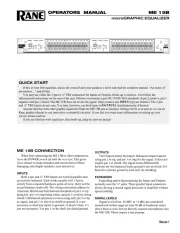
17 Juni 2025
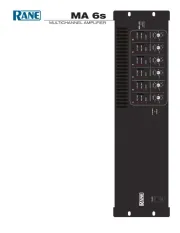
17 Juni 2025
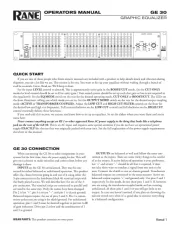
17 Juni 2025
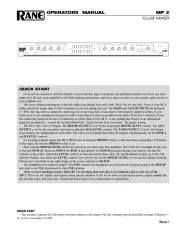
17 Juni 2025
Handleiding Mengpaneel
- Stirling
- Marquant
- Pyle Pro
- DAP
- Bogen
- Proline
- Inventum
- Kalorik
- CaterChef
- Flama
- LD Systems
- Dateq
- Warm Audio
- Alto Professional
- Steren
Nieuwste handleidingen voor Mengpaneel
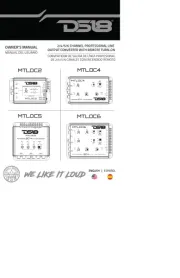
8 September 2025
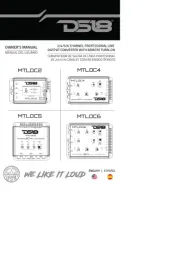
8 September 2025
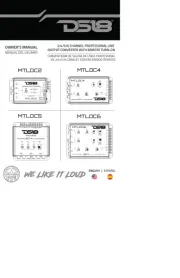
8 September 2025
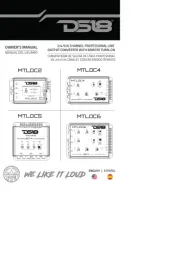
8 September 2025

12 Augustus 2025
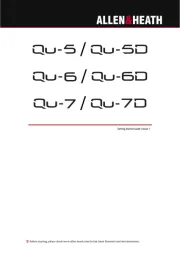
12 Augustus 2025
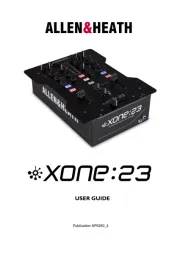
11 Augustus 2025
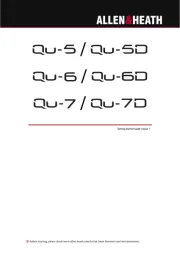
11 Augustus 2025
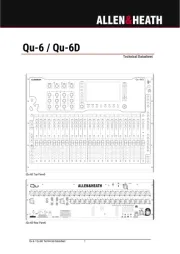
11 Augustus 2025
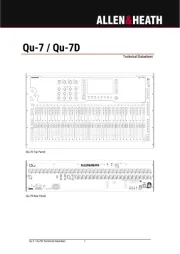
11 Augustus 2025